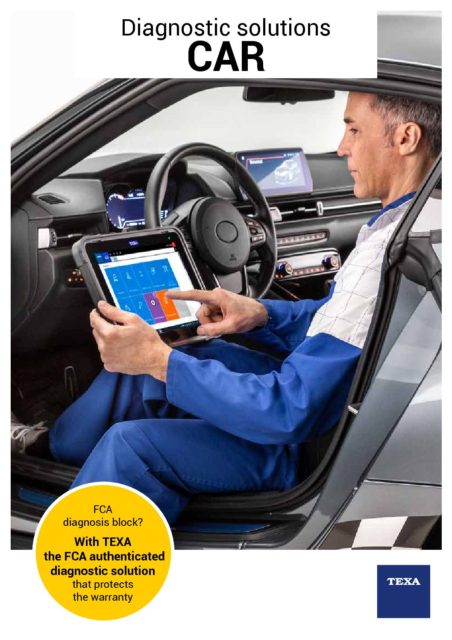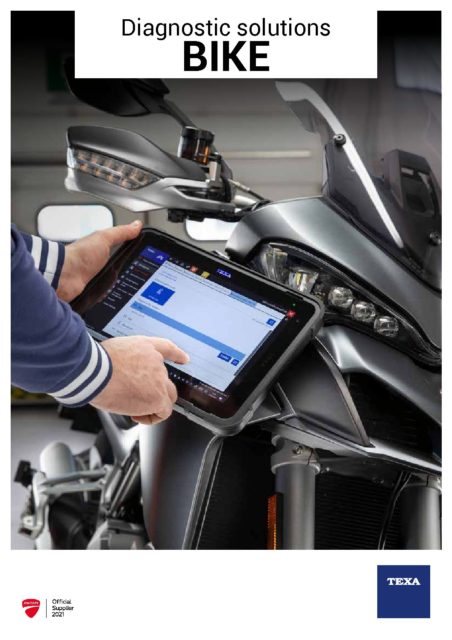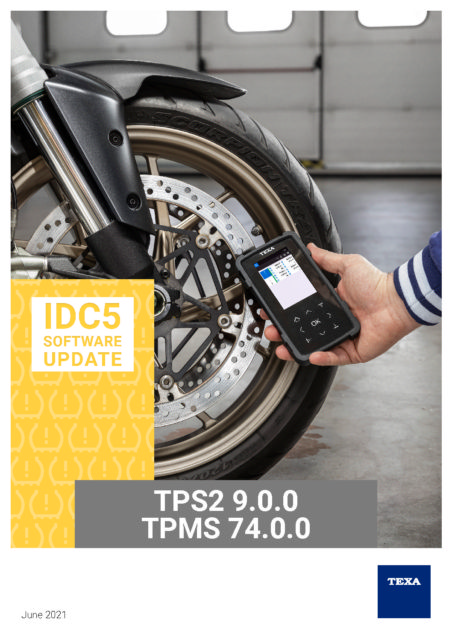Discover TPS
The tyre specialist
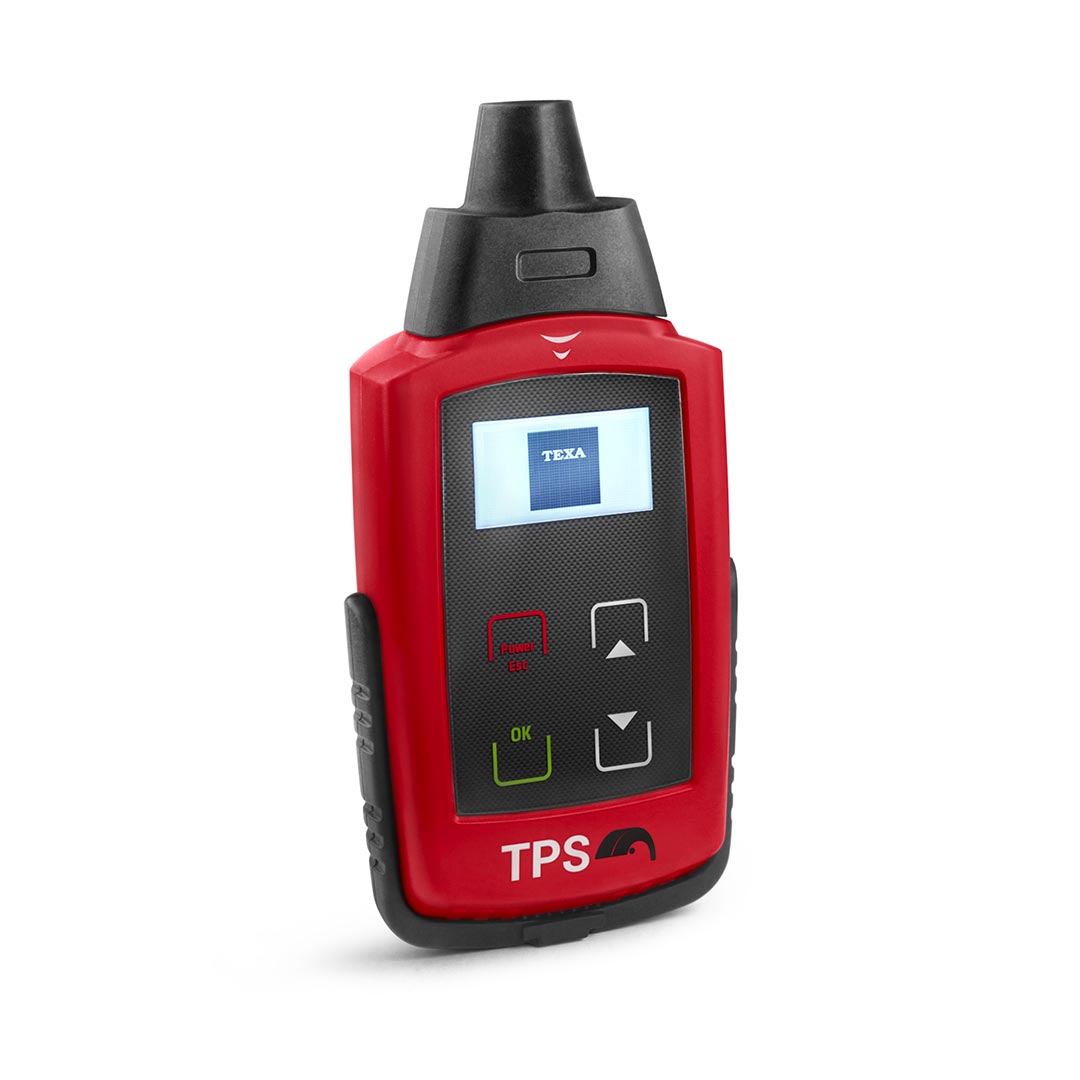
What is TPMS?
European legislation requires that from 1st November 2014, all vehicles destined for the transport of passengers must be equipped as standard with TPMS (Tyre Pressure Monitoring System).
With a few rare exceptions, tyre pressure is monitored by sensors fitted to the tyre inflation valves. Each sensor can measure tyre pressure, temperature and movement. The sensors are powered by a small lithium battery and dialogue with the control unit over a radio link.
Working with TPMS systems can be particularly challenging because there is not yet any standard governing their form, positioning and radio frequency. A technically evolved tool is therefore essential to tackle TPMS maintenance work effectively.
TPS the standard solution for the TPMS
TPS (Tyre Pressure Service) is TEXA’s solution for tyre-related service operations. TPS boasts an exceptional coverage of makes and models as well as TEXA’s traditionally robust design and build quality.
Once you have selected the make and model of vehicle, TPS can dialogue with the valve sensors on each wheel. Placing the tool near the sensors allows you to activate them and check their efficiency even if they are in stand-by mode at the time. The tool’s own display reads out pressure, temperature and battery charge level (where available), as well as the relevant identification codes and all other diagnostic information provided by the vehicle manufacturer.
Extraordinary skills within reach
TPS lets you check the condition of sensors and replace them if necessary. The tool’s own built-in database provides a list of compatible spare parts for each selected vehicle. TEXA’s vast database also provides other items of valuable information, including correct procedures for rotating tyres.
If a sensor is replaced by a universal spare part, the TPS tool can even program the new sensor to assign it the same identification code as the old one and link it to the receiver or vehicle control unit.
The procedures are made simple by a highly intuitive menu that guides you through all options step by step.
TUTORIAL VIDEO TPS
Replacement of the TPMS sensor writing the ID code manually
Replacement of the TPMS sensor with automatic programming code ID
Customer Service
Team and technology at your service
* Verify the availability of SERVICER in your own country.
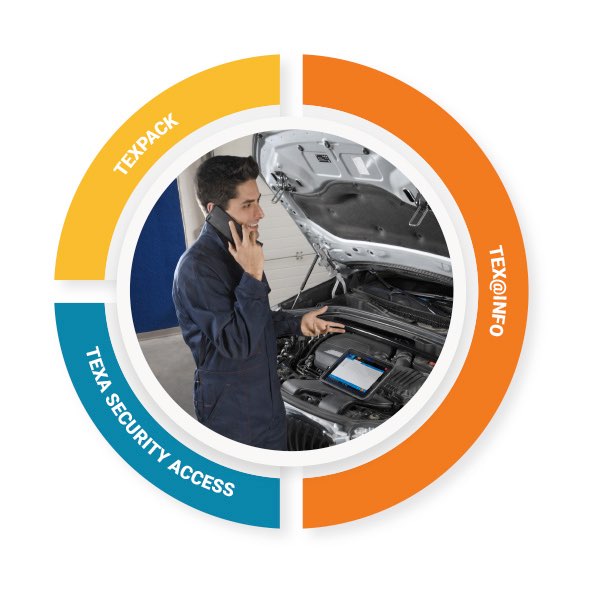
Technical Specifications
PROCESSOR
Cortex M0+ , 48 MHz
COPROCESSOR
Custom on FPGA (sensor communications)
RAM
16 MB
DISPLAY
Dimensions: 1.5”, Type: backlit monochrome LCD, Resolution: 64×128
TRANSMISSION FREQUENCY
125 kHz
RECEPTION FREQUENCY
433 MHz – 434 MHz
CABLE COMMUNICATIONS
USB
WIRELESS COMMUNICATIONS
Bluetooth class 2 with integrated antenna
BATTERY
Type: Li-ion, Capacity: 1100 mAh, Voltage: 3.7 V
AUTONOMY
approx. 8 hours
CONSUMPTION
500 mA from USB port
RECHARGE
via USB, approx. 3 hours
ENVIRONMENTAL
Operating temperature: – 10 °C to 40 °C
Storage temperature: – 20 °C to 60 °C
Battery charging temperature: 0 °C to 45 °C
Relative humidity, storage and functioning: 10% to 80%, non-condensing
DIMENSIONS
63x142x30 mm
WEIGHT
136 g
DIRECTIVES
Directives: 1999/5/EC R&TTE, 2011/65/EU ROHS
Electromagnetic Compatibility:ETSI EN 301-489-1:2011, ETSI EN 301-489-17:2012
Radio systems: ETSI EN 300 328:2012-06
Safety:EN 60950-1:2006 + A11:2009 + A1:2010 + A12:2001 + AC:2011


